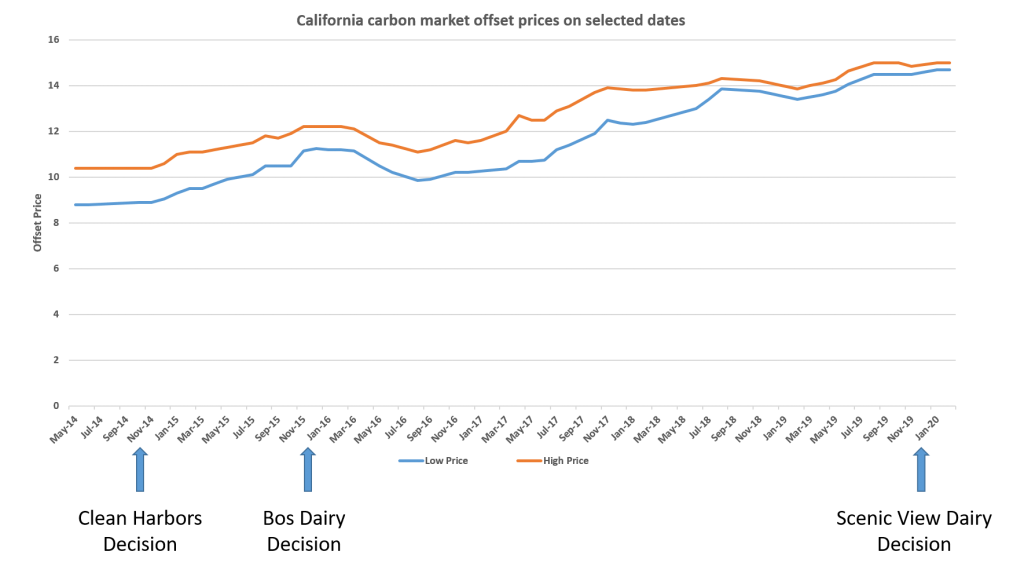California’s experience with buyer liability shows how aviation can help ensure environmental integrity

The International Civil Aviation Organization is preparing to stand up its market-based emissions reduction program, the Carbon Offsetting and Reduction Scheme for International Aviation, or CORSIA. As it does so, ICAO must maintain CORSIA’s environmental integrity.
To that end, airlines should not be allowed to count, for CORSIA compliance, carbon credits that have been found to be invalid, e.g., fraudulently issued or otherwise not meeting CORSIA’s standards for credit quality. To ensure that all credits represent actual emission reductions, such substandard credits should be invalidated – even if the fraud isn’t exposed until after airlines have canceled the credits in CORSIA. The emissions for which the credits had been tendered have occurred, and still need to be covered by valid reductions in order to meet CORSIA’s promise of “carbon neutral growth.”
California offers one approach to how CORSIA can do this. In its market-based climate program, California has developed a way to cover the emissions from invalidated credits to uphold the integrity of its program and encourage emitters to invest only in high-integrity offsets. It’s known as “buyer liability,” which means that if the California Air Resources Board (CARB), the regulatory body, invalidates offset credits, then those who purchased the credits for compliance with California’s emissions limit must replace the invalidated credits. This ensures that emitters meet their full compliance obligations and that they are more diligent in selecting offsets.
Early on, California’s buyer liability approach caused some uncertainty among offset project developers. But seven years of experience demonstrates that buyer liability has worked in California’s carbon market. Here’s how we know:
1. California’s “buyer liability” approach has only invalidated a small number of credits.
Since the inception of California’s carbon market in 2013, CARB has issued almost 173 million offset credits. Of these, 35 million were issued under the portion of the program that uses the “buyer liability” approach. Only 107,822 – 0.3% – of these have been invalidated. Invalidation is rare, likely due to stringent offset protocols and buyers exercising due diligence in purchasing credits.
2. Offset usage has increased over the life of the program.
California allows covered entities to offset emission reductions by purchasing a limited amount offset credits. Buyer liability does not appear to have hampered the ability of covered entities to find and use high quality offset credits. In fact, the use of offset credits for compliance has increased since the carbon market began in California. During the first compliance period (2013-2014), regulated entities used offsets to cover approximately 4.5% of their total obligation. The usage limit is 8%, so companies were using just over half of the amount of allowed offset credits. During the second compliance period (2015-2017), entities used offsets to meet 6.4% of their compliance obligation, and market analysists predicted pre-COVID-19 that companies would use offsets to meet 7% of their obligation during the current compliance period. Global health crisis notwithstanding, demand for offsets appears to have steadily increased over time.
3. The California government undertook three investigations of offset credits; prices remained stable through all three investigations.
CARB undertook three investigations into already-issued offset credits. CARB investigated these in response to allegations that the projects had violated environmental rules, dumping pollution into the air and onto land even as they cut carbon emissions.
In two of these investigations, CARB invalidated the credits. Even so, overall offset prices remained stable.
| Reason for investigation | Credits invalidated | |
|---|---|---|
| Scenic View Dairy (Nov 2019 – Jan 2020) | Violation of health and safety regulations of the Michigan Department of Environment, Great Lakes, and Energy | 18867 |
| Bos Dairy (Sep 2015 – Feb 2016) | Alleged violations of air quality permits under the Indiana Administrative Code | 0 |
| Clean Harbors (May 2014 – Nov 2014) | Violations of operating permit under the US federal Resource Conservation and Recovery Act | 88955 |
Click on graph to expand. Note that the 2016 price dip coincides with an overall drop in California carbon prices due to legal proceedings and legislative action, both unrelated to offset credits. Price data form CaliforniaCarbon.Info ($).
4. Buyer Liability is a key tool for CORSIA integrity, but needs clear rules to encourage due diligence by buyers.
California’s experience shows that carefully designed buyer liability rules can help maintain the integrity of carbon markets. While buyer liability introduces some uncertainty for market actors, California’s decision to adopt, in advance, clear rules and standards for invalidation reduced the effect of this uncertainty. Although California could clarify its rules with respect to the impact of an ongoing investigation on the length of an invalidation period, the rules are specific for what could trigger an investigation and subsequent invalidation of offset credits, so market actors – emitters, project developers, and verifiers – understand the parameters (see §95985 (c) of the cap-and-trade regulations).
Preserving CORSIA’s environmental integrity
This case study of California illustrates that while a “buyer liability” approach to offset credits contains some inherent risk, it does not appear to have had a negative long-term impact on California’s market, and indeed has helped the program preserve its model standards of environmental integrity.
CORSIA should develop detailed standards for when offset credits can be investigated and potentially retroactively invalidated, set forth a clear timeline for those investigations and invalidations, and ensure full transparency of the process. The goal of such an approach is to preserve the environmental integrity of CORSIA, so all of the reported emission reductions from international aviation result in real benefits to the global climate.













